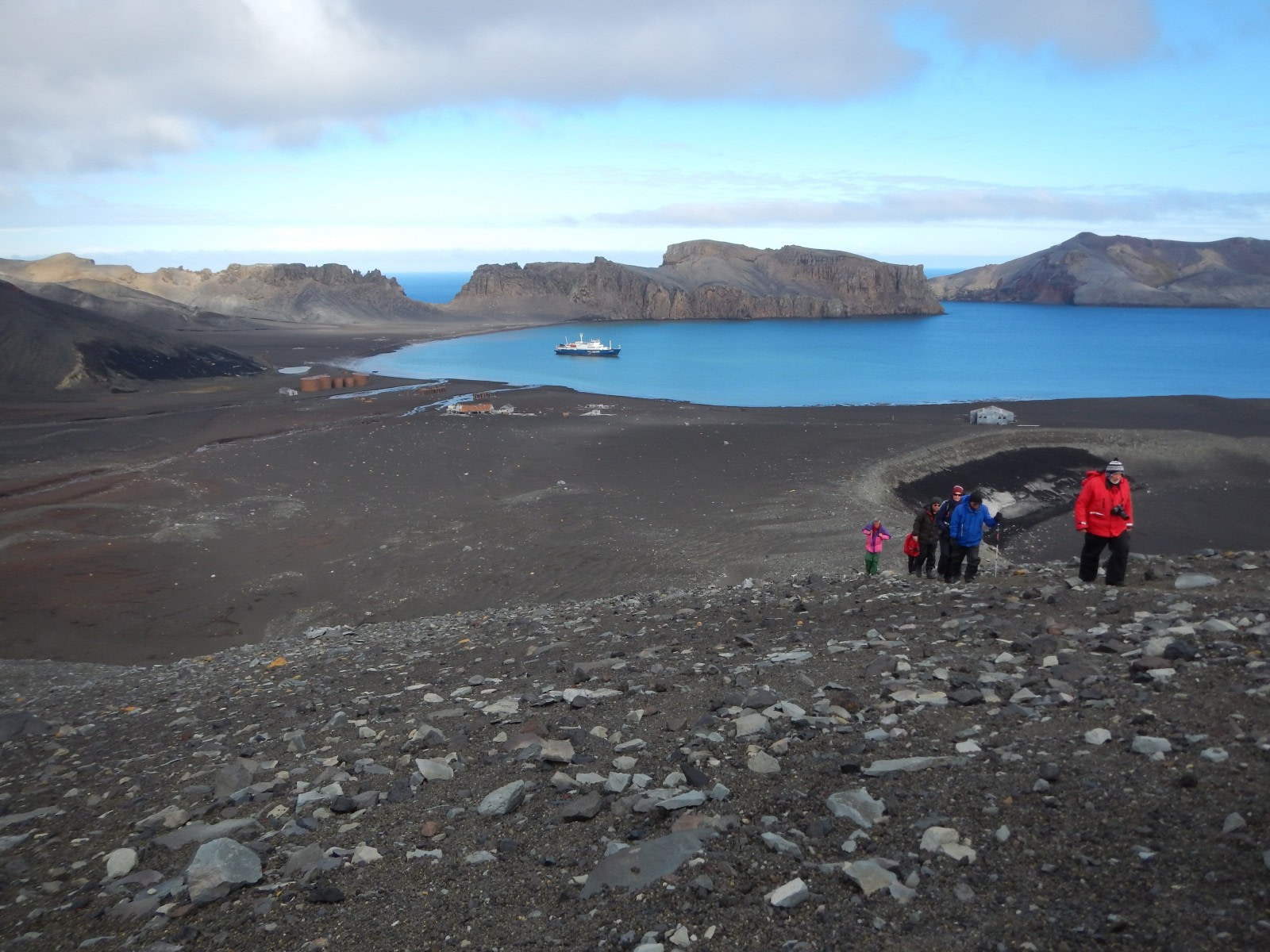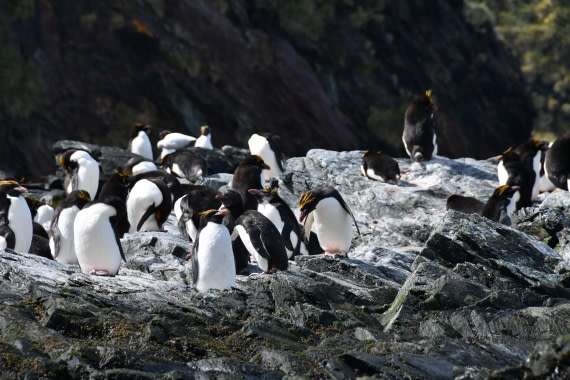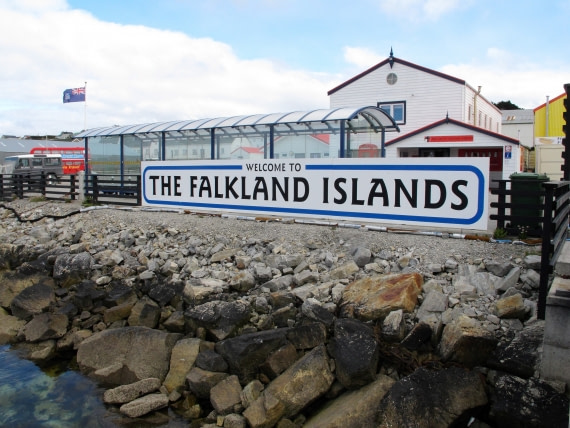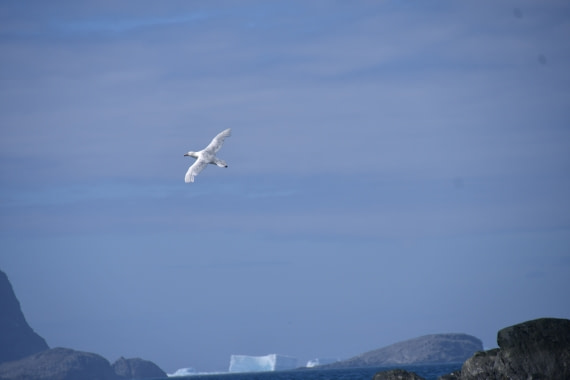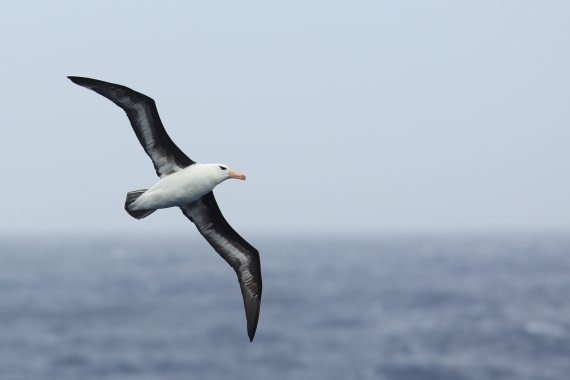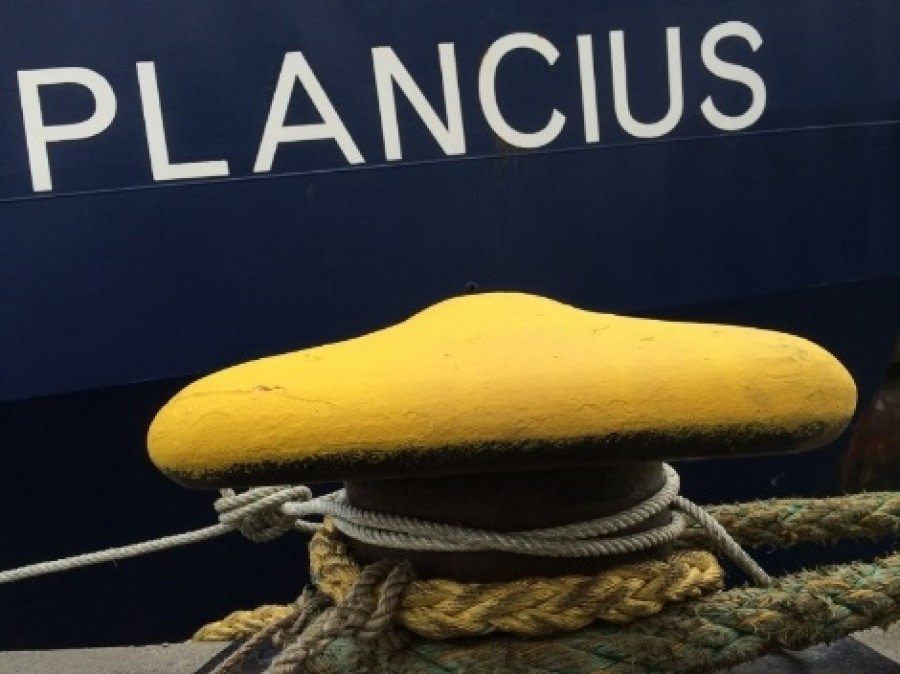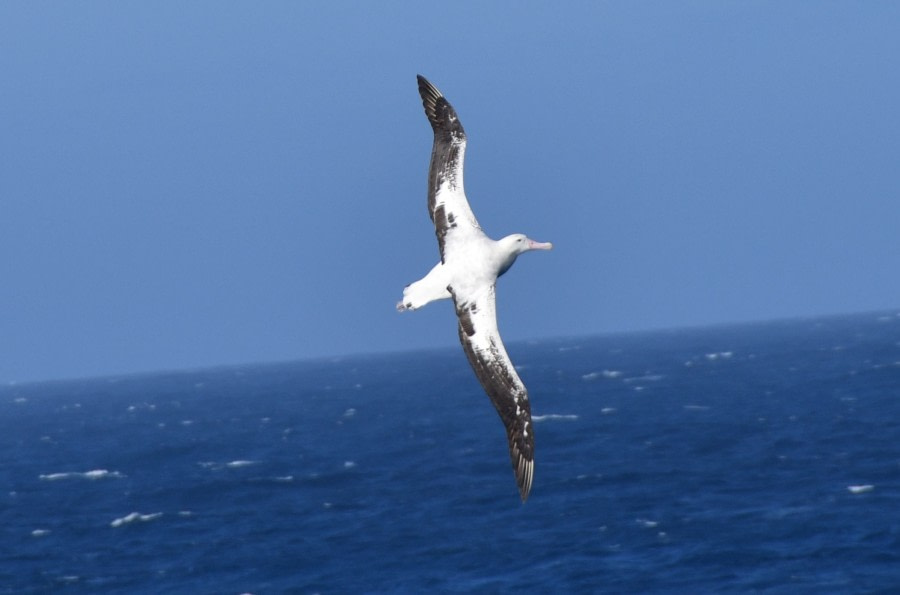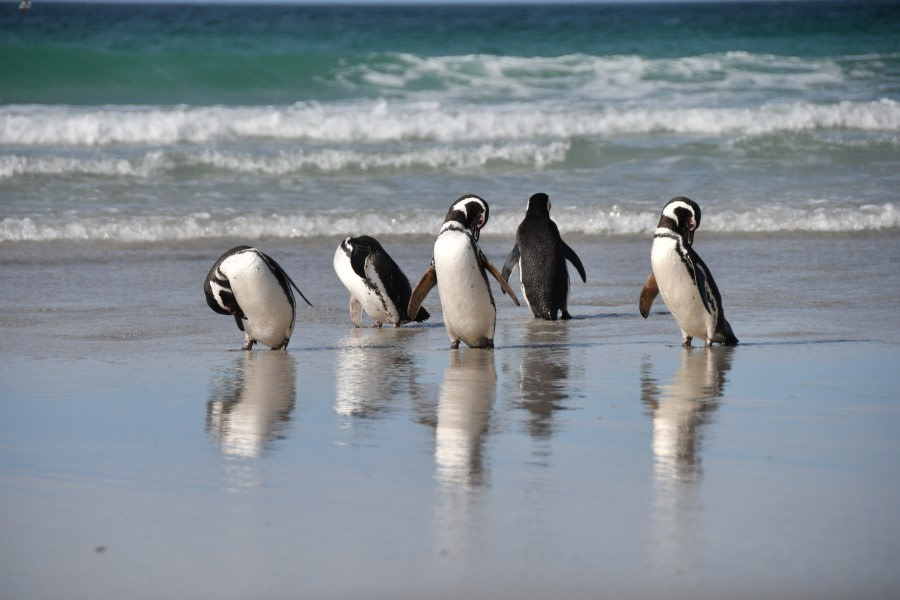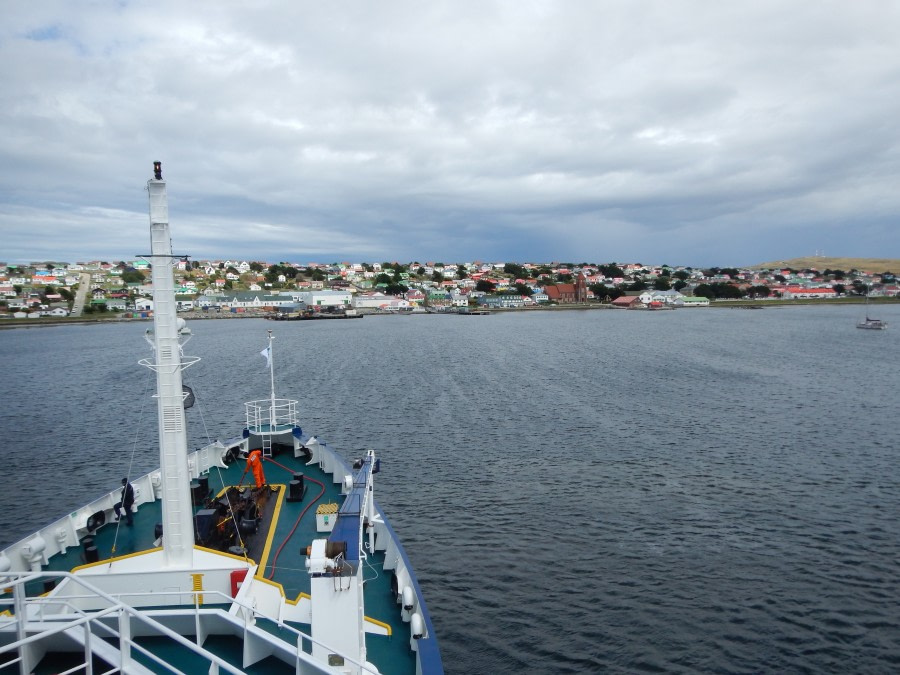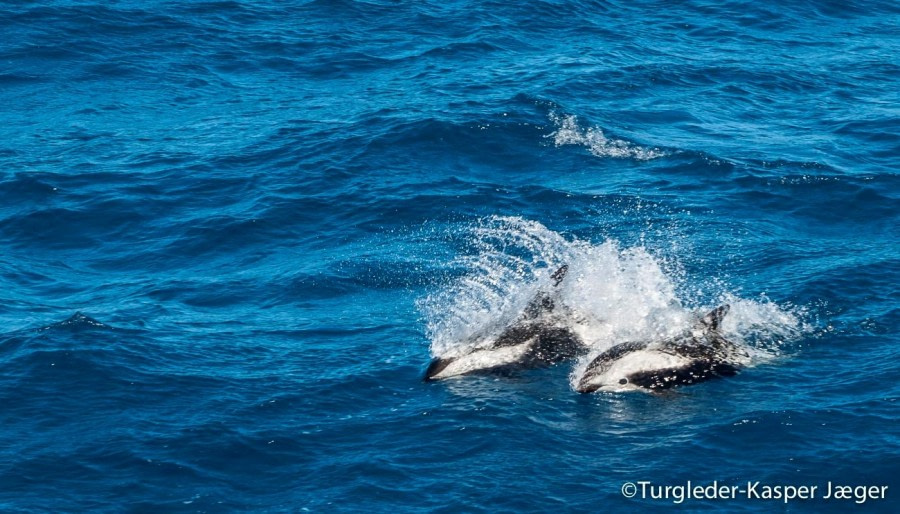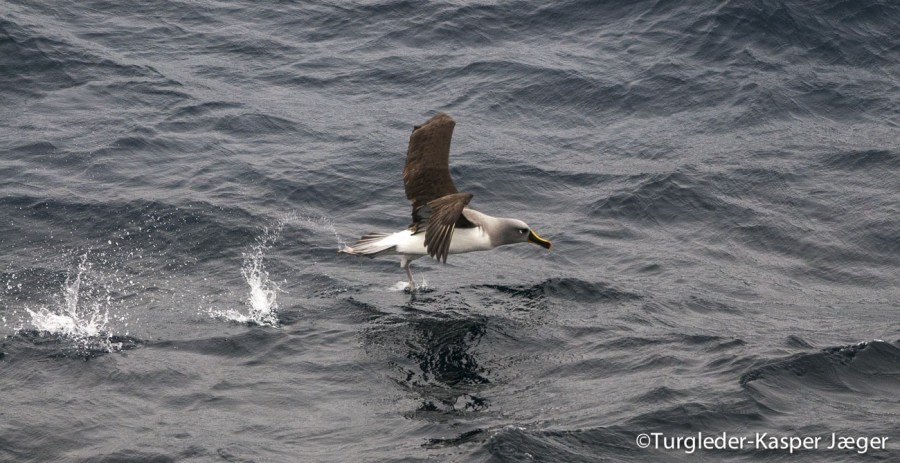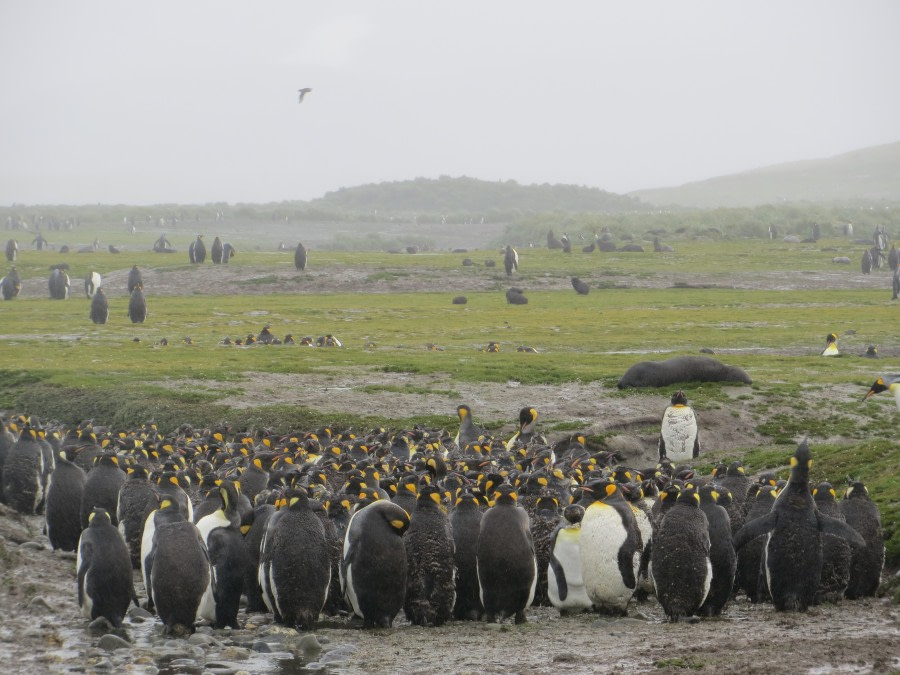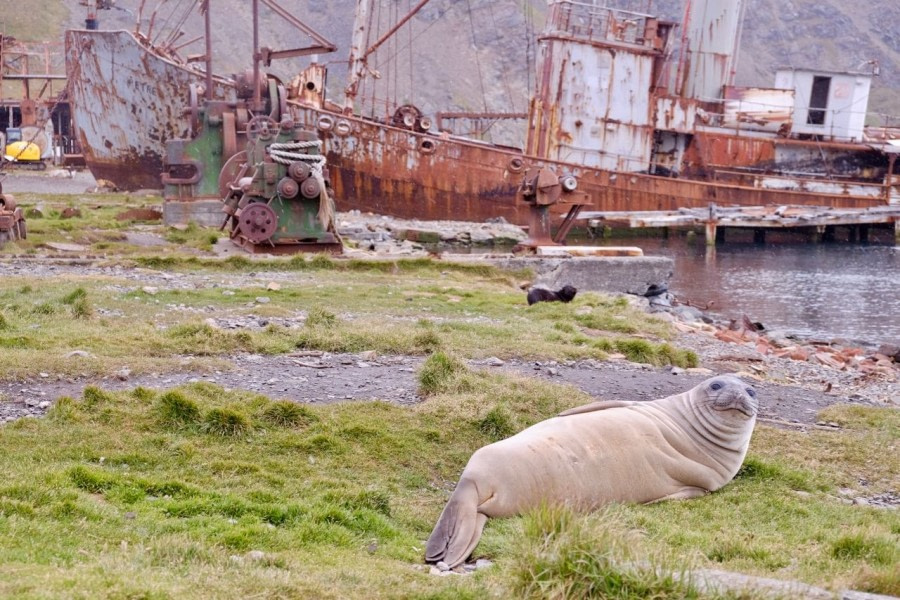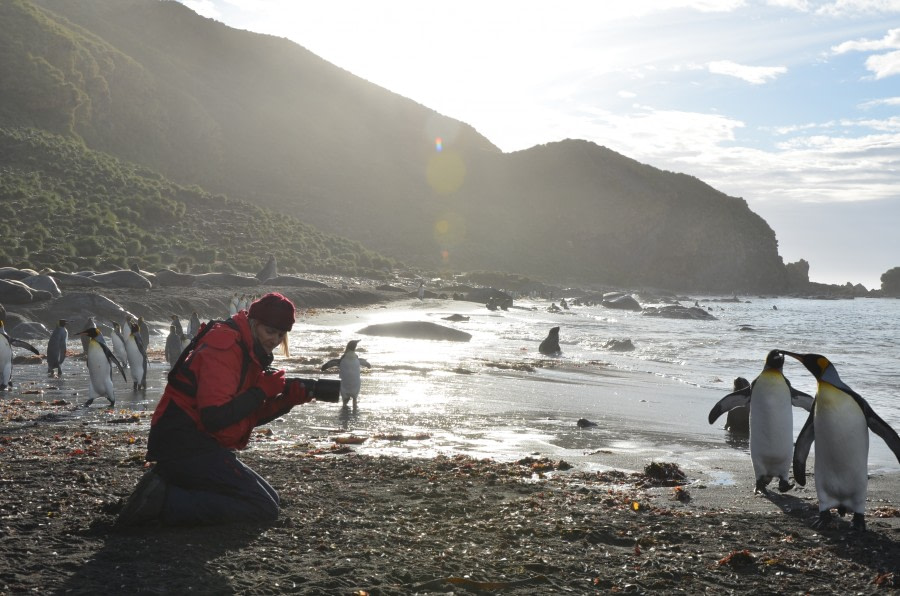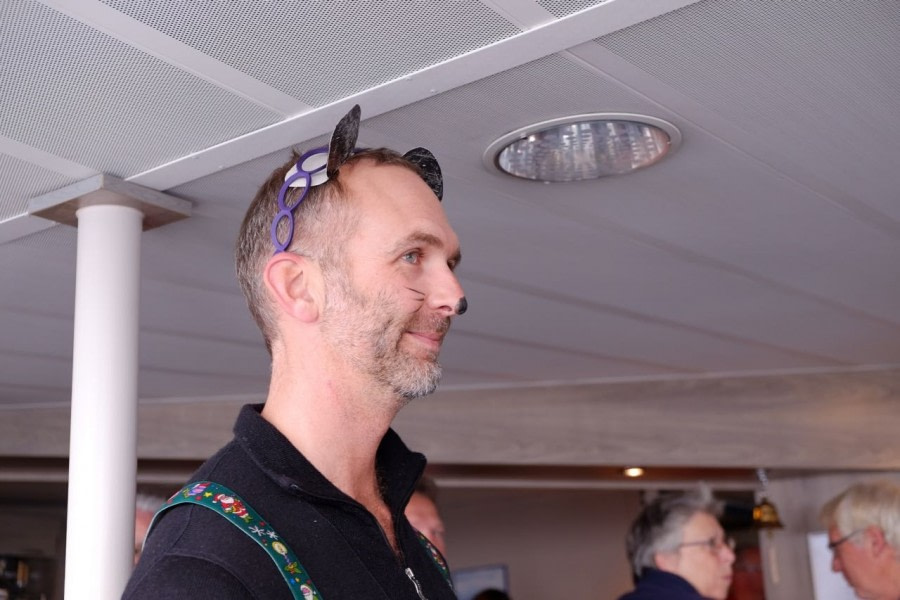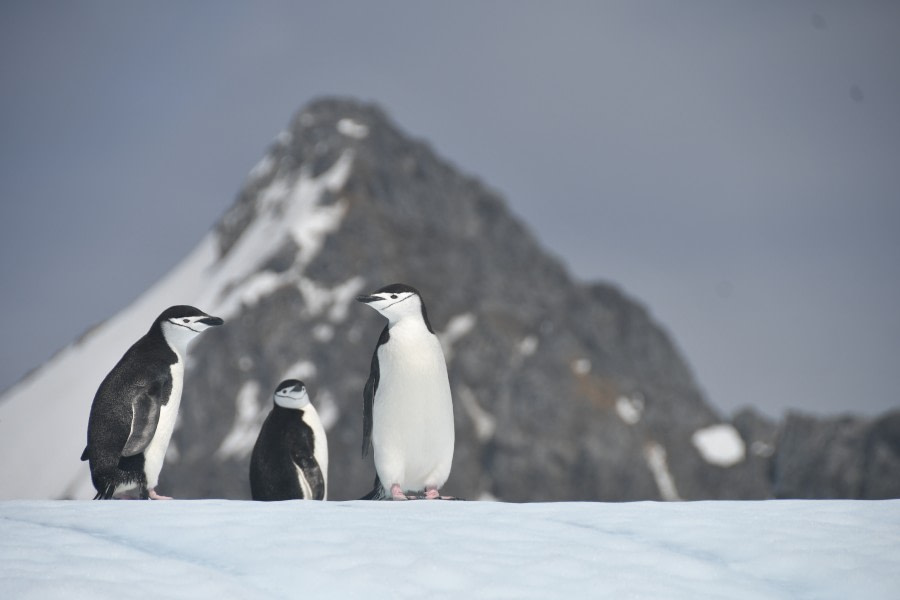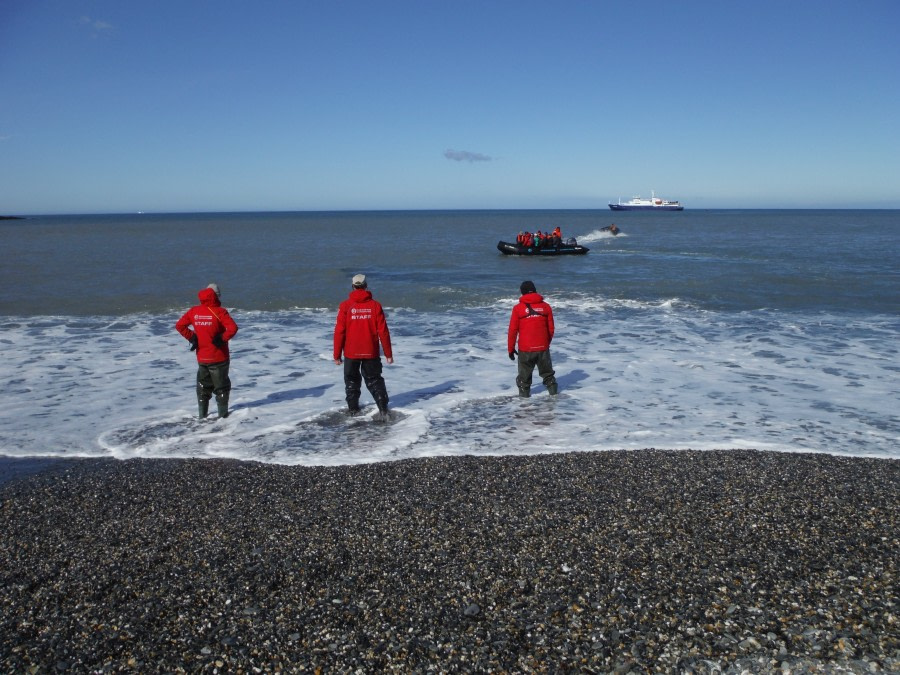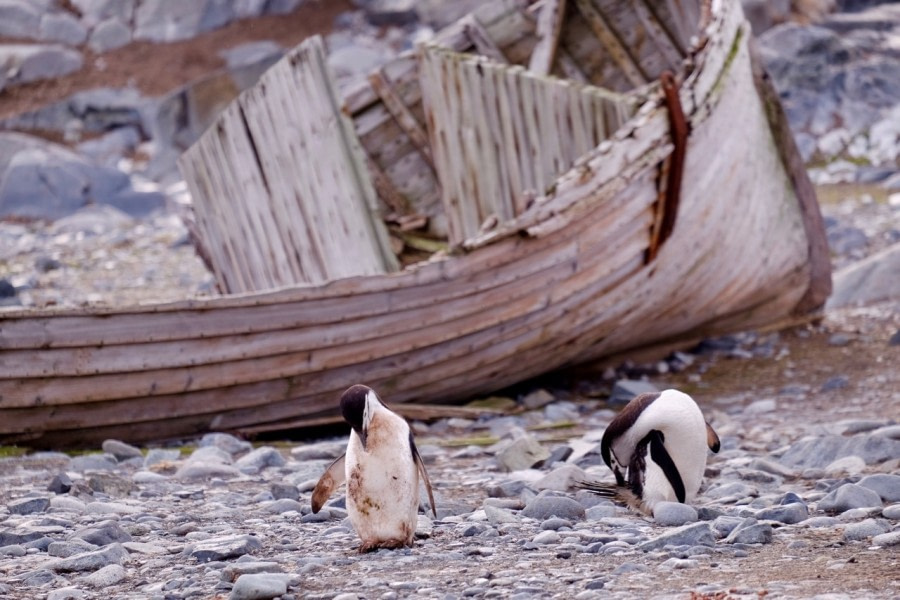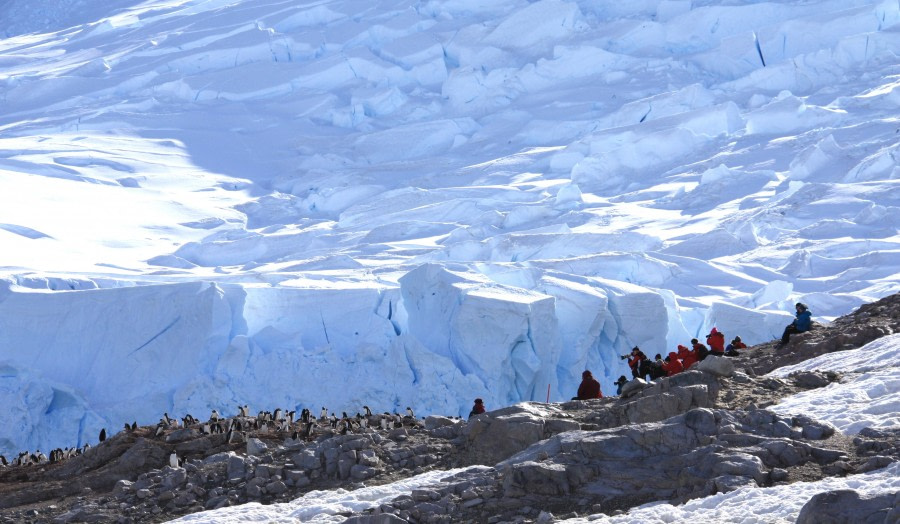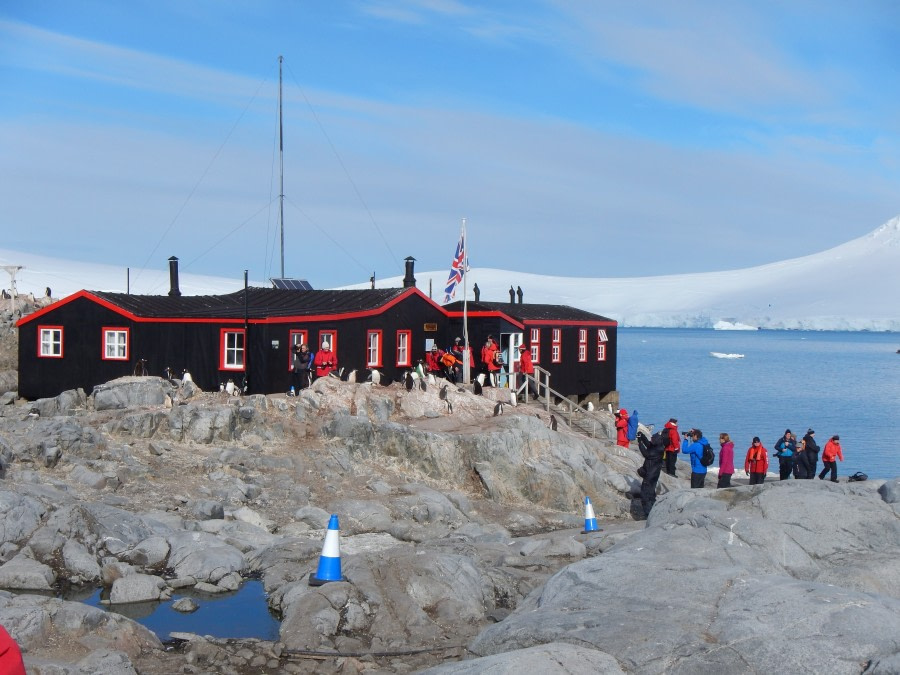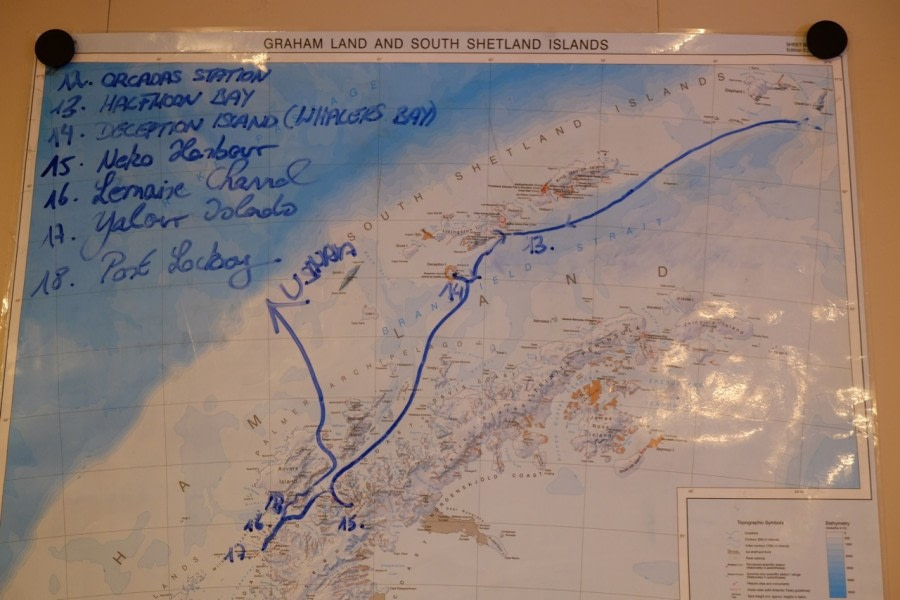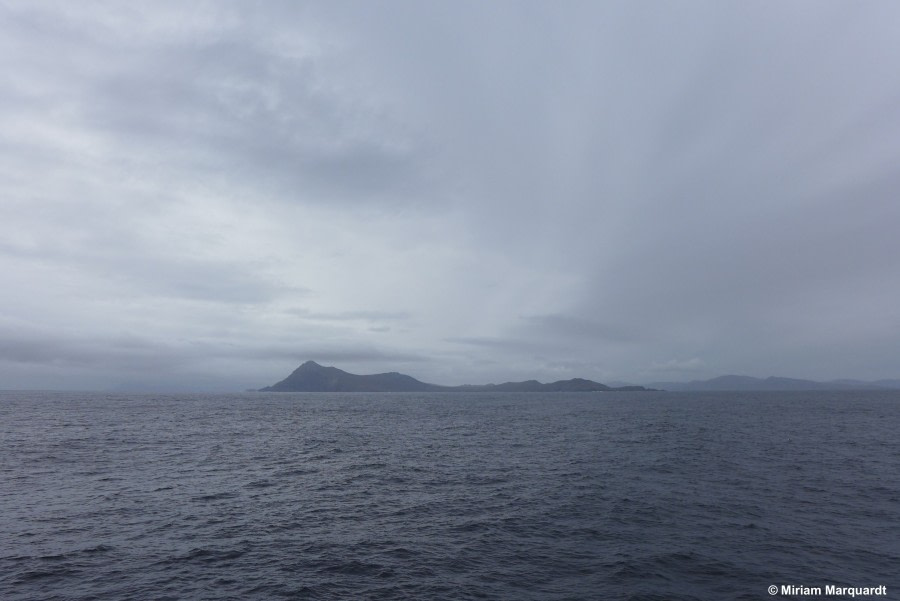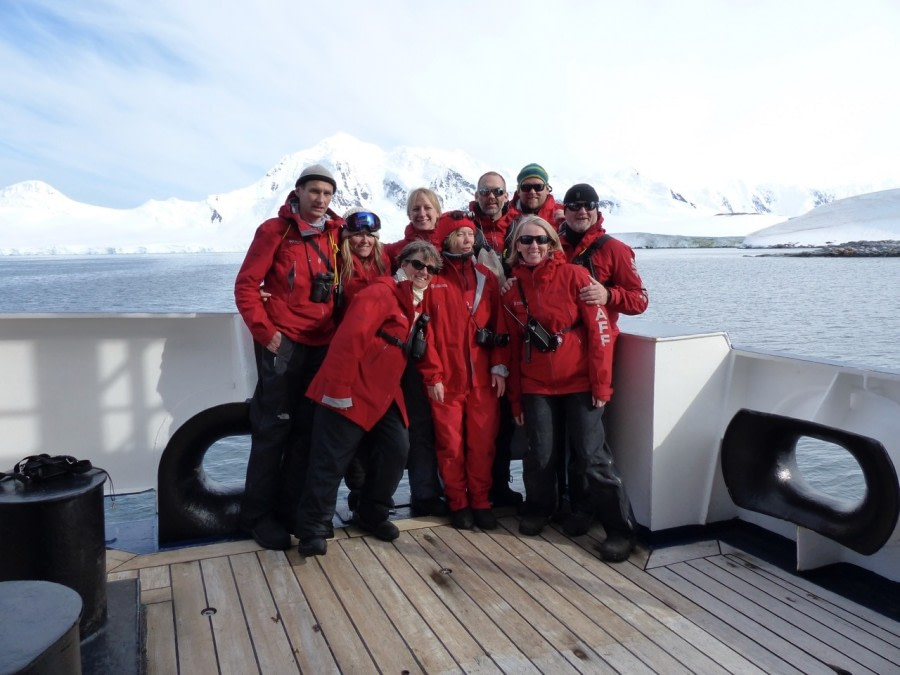| Datum: | 18.01.2017 |
| Positie: | 42°45'S / 065°01'W |
| Weer: | Bewolkt |
| Luchttemperatuur: | +15 |
Na lange vluchten voor sommigen en een hop/skip/jump voor anderen landden we aan de voet van de ruggengraat van de Andes in het stadje Ushuaia, vastgeklampt aan de zijkanten van de besneeuwde bergen die de bocht in het midden van het Beaglekanaal omringen. We konden het Kanaal inderdaad zien vanuit onze vliegtuigstoelen. Maar het werd nog spannender toen we afdaalden over het sprankelende water rond de pier waar ons schip op ons zou wachten. Na een halve dag verkennen en een ontspannen lunch gingen we in de rij staan, waarbij we even pauzeerden op de pier om foto's te maken van de schijnbaar enorme romp van het schip. We wachtten geduldig in de rij om aan boord verwelkomd te worden door ons personeel, kregen onze hutten te zien - de thuisbasis voor de komende 18 dagen - en liepen al snel door het schip om de indeling te bekijken en de koffiemachine en lounge te vinden. Met beide zouden we de komende dagen vertrouwd raken. In korte tijd lieten de AB's (volwaardige zeelieden) de trossen los en begonnen we aan onze zeiltocht oostwaarts door het Beagle-kanaal. Vrijwel meteen daarna werden we naar onze verzamelplaats geroepen om te leren wat we moesten doen in geval van een noodsituatie aan boord, "wanneer we niet langer in staat zijn om jullie veiligheid te garanderen", aldus onze veiligheidsofficier. We sloten ons aan bij de anderen, trokken dikke, feloranje reddingsvesten aan en oefenden het noodscenario. Laten we hopen dat dit de laatste keer is dat we deze dragen! Even later werden we uitgenodigd in de lounge om onze kapitein te ontmoeten, wiens vrolijke verhalen onze harten verwarmden. We konden ons geen meer ervaren en nuchtere kapitein wensen... we voelden ons in veilige handen. Na een paar hapjes en een toast op onze goede reis gingen we verder met ons eerste diner, een heerlijke maaltijd geserveerd door heerlijk en vrolijk bedienend personeel. Op naar bed voor een welverdiende rust, waarna we de nacht doorbrachten om te wennen aan het slapen in een stapelbed en het schommelen van het schip om onze zenuwen te kalmeren. In de vroege ochtend zouden we de open wateren van de Drake Passage opgaan en oostwaarts naar de Falklandeilanden varen.
